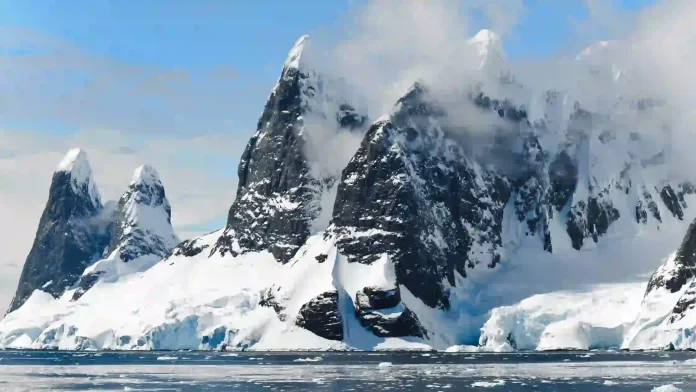India, with its diverse geographical features, is home to some of the most spectacular and vital glaciers in the world.
Nestled in the lap of the Himalayas, these icy behemoths play a crucial role in maintaining the ecological balance and sustaining river systems that millions depend on.
In this article, we will explore the major glaciers in India, each with its unique characteristics and contributions to the nation’s geography and hydrology.
Gangotri Glacier: The Sacred Source of the Ganges
Situated in the state of Uttarakhand, the Gangotri Glacier is one of the holiest and most significant glaciers in India.
Revered as the source of the Ganges, the Gangotri Glacier feeds the Bhagirathi River, a primary tributary of the Ganges.
Covering an area of approximately 30 square kilometers, it is one of the largest glaciers in the Indian Himalayas. The Gangotri Glacier is an essential water source for millions and is embedded deeply in the cultural and religious fabric of India.
Yamunotri Glacier: The Birthplace of the Yamuna
Just as Gangotri is sacred to the Ganges, the Yamunotri Glacier holds religious significance as the birthplace of the Yamuna River.
Located in the Uttarkashi district of Uttarakhand, this glacier is the source of the Yamuna, the second-largest tributary of the Ganges.
The Yamunotri Glacier is smaller in comparison to Gangotri but plays a vital role in the sustenance of the Yamuna River, contributing to the agricultural fertility of the northern plains.
Siachen Glacier: The World’s Highest Battlefield
The Siachen Glacier, often referred to as the “Third Pole,” is the world’s highest battlefield, situated in the eastern Karakoram Range in the northern part of Jammu and Kashmir.
This glacier is of immense strategic importance due to its location along the Line of Control between India and Pakistan.
Despite the harsh conditions, Siachen is a source of major rivers like the Nubra and Shyok, which eventually join the Indus River.
The Siachen Glacier is a testament to the challenges faced by military personnel stationed in one of the world’s most inhospitable terrains.
Gangri Glacier: A Jewel in Himachal Pradesh
Nestled in the Lahaul and Spiti district of Himachal Pradesh, the Gangri Glacier is a significant glacier in the Western Himalayas. This glacier is the source of the Bhaga River, a tributary of the Chenab River.
The Gangri Glacier is surrounded by towering peaks and is a critical contributor to the hydrology of the region.
Its meltwaters sustain the agricultural and ecological systems downstream, making it an integral part of the local landscape.
Chhota Shigri Glacier: Studying Climate Change in the Himalayas
Located in the Lahaul Valley of Himachal Pradesh, the Chhota Shigri Glacier is renowned for being one of the longest-studied glaciers in the world. Scientists have been monitoring this glacier for decades to understand the impact of climate change on Himalayan glaciers.
The Chhota Shigri Glacier is a benchmark for research on glacial retreat and its implications for downstream water resources. Its contributions to scientific knowledge make it a glacier of global significance.
Pindari Glacier: A Trekker’s Paradise
Situated in the Kumaon region of Uttarakhand, the Pindari Glacier is a popular trekking destination, drawing adventure enthusiasts from around the world.
Surrounded by breathtaking landscapes, the glacier is the source of the Pindar River, which eventually joins the Alaknanda River.
The Pindari Glacier trek provides not only a visual treat of snow-capped peaks and ice formations but also a glimpse into the ecological importance of these icy giants in sustaining river ecosystems.
Zemu Glacier: In the Heart of Sikkim
In the northeastern state of Sikkim, the Zemu Glacier stands as one of the largest glaciers in the Eastern Himalayas. It feeds the Teesta River, a crucial water source for Sikkim and West Bengal.
The Zemu Glacier is surrounded by towering peaks, including the majestic Kanchenjunga, the third-highest mountain in the world.
Monitoring the changes in the Zemu Glacier provides valuable insights into the impact of climate change on glaciers in the Eastern Himalayas.
Baltoro Glacier: Gateway to the World’s Highest Peaks
Located in the Gilgit-Baltistan region of Pakistan-administered Kashmir, the Baltoro Glacier is included in this list due to its proximity to the Indian border and its significance in the Greater Himalayas.
This massive glacier is surrounded by some of the world’s highest peaks, including K2, Broad Peak, and Gasherbrum I and II. The meltwaters from the Baltoro Glacier contribute to the formation of the Shigar River, which eventually joins the Indus River.
Conclusion
India’s glaciers are not only awe-inspiring natural wonders but also critical components of the nation’s ecological and hydrological systems.
From the spiritual significance of the Gangotri and Yamunotri glaciers to the strategic importance of Siachen, each glacier contributes to the diverse tapestry of India’s geography.
As climate change poses challenges to the sustainability of these glaciers, understanding and monitoring their dynamics become paramount for ensuring water security and preserving the delicate balance of the Himalayan ecosystem.
